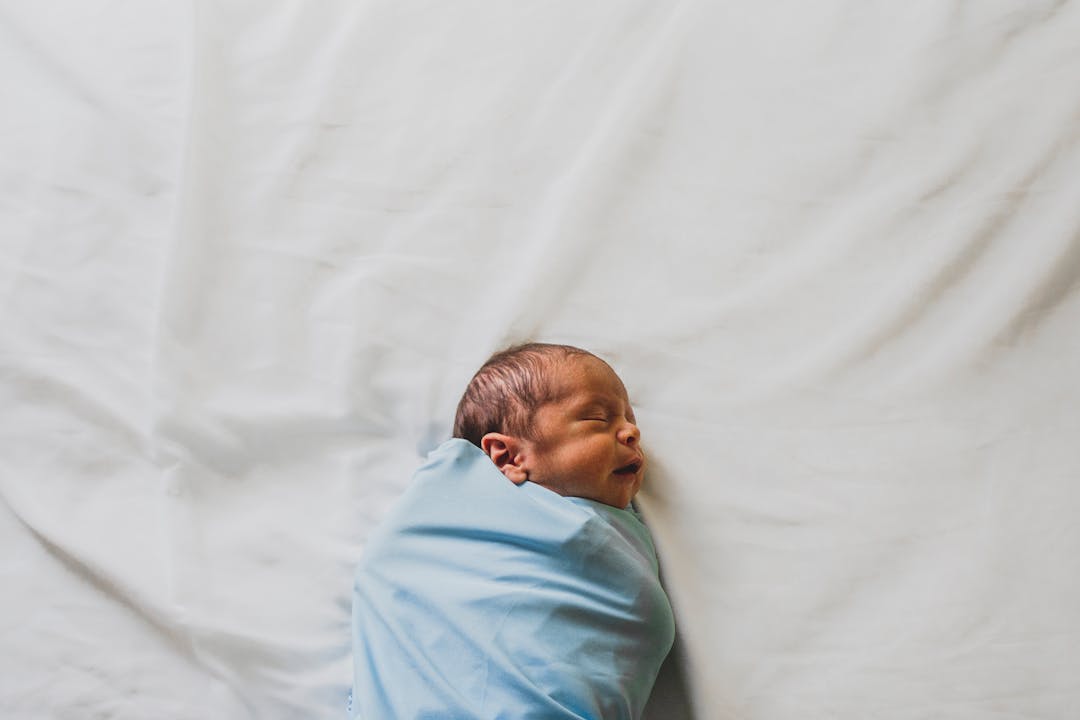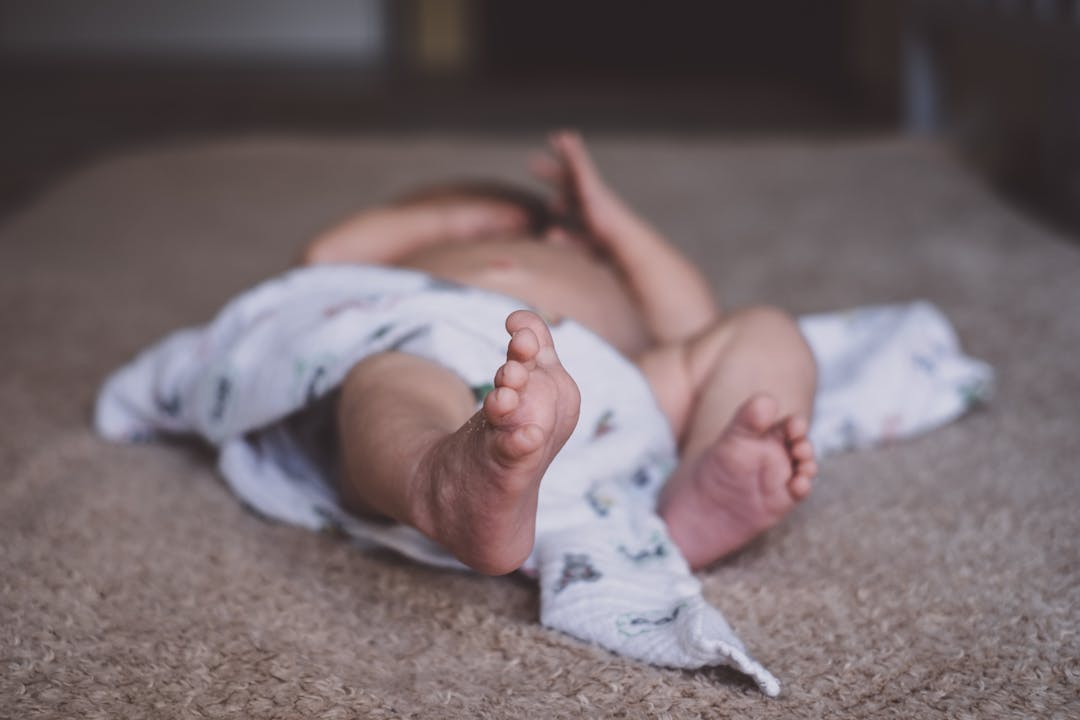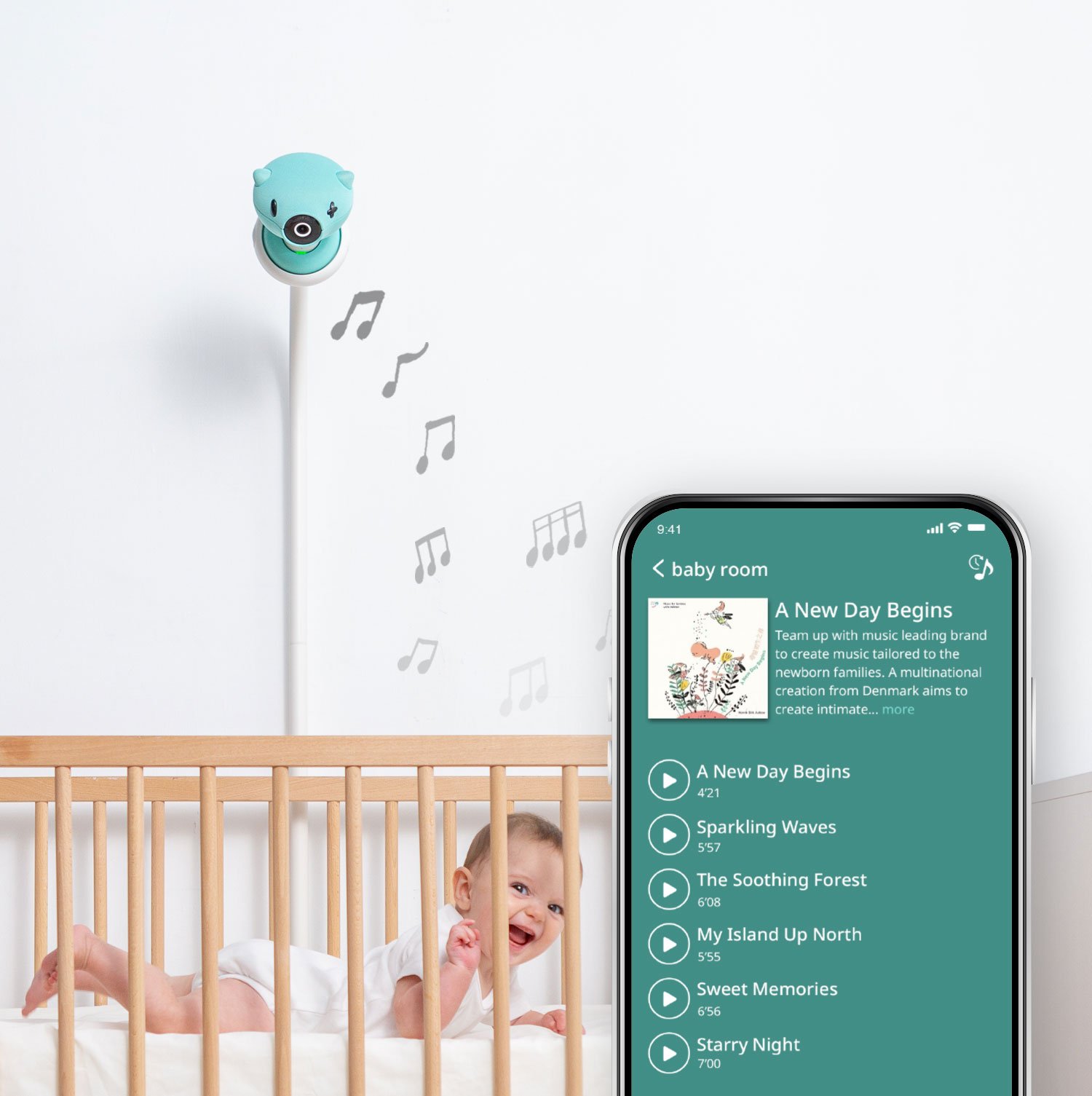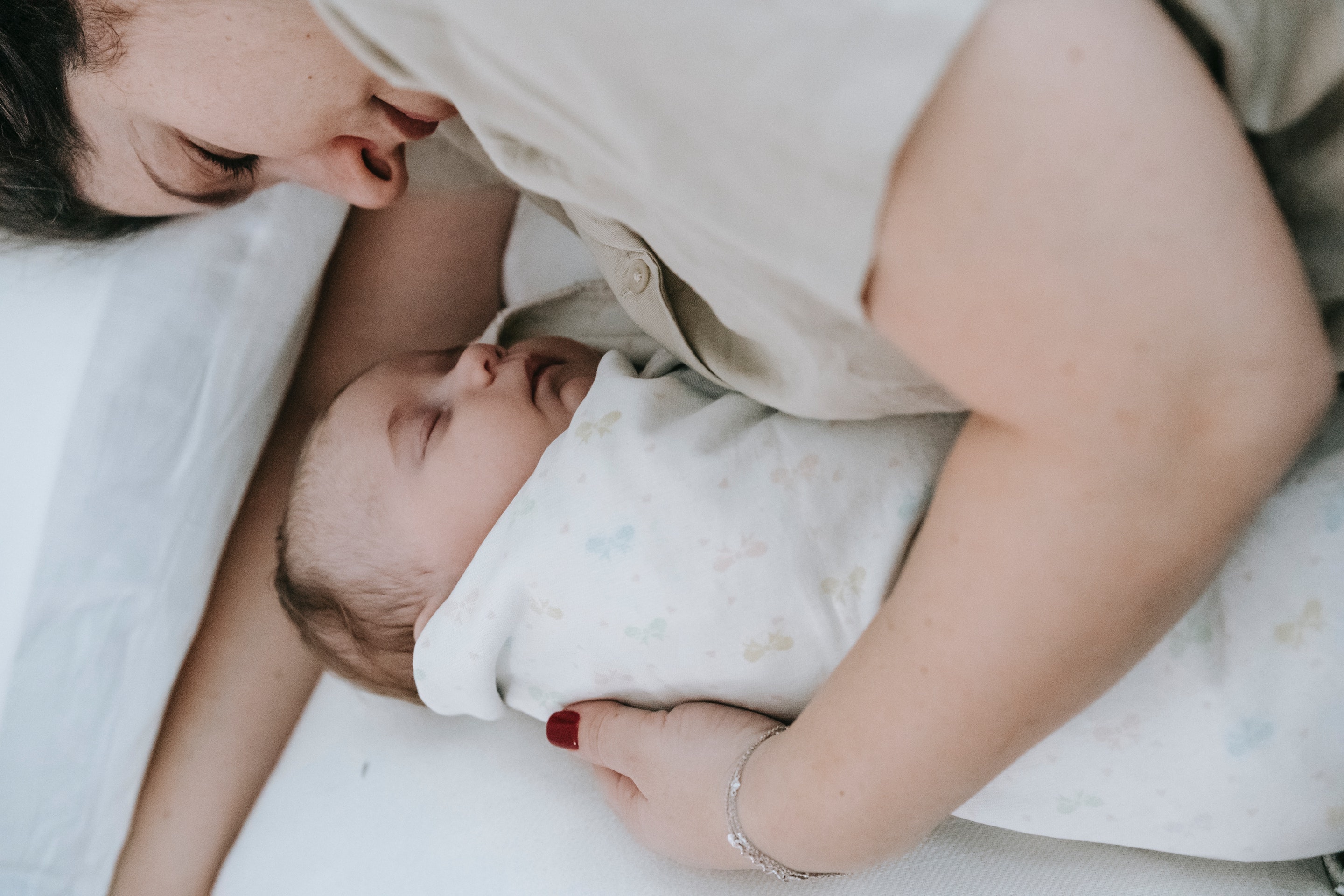Imagine that you're all curled up in your warm bed when a piercing alarm rouses you. That's what it's like for a newborn baby who has just left the comfort of your womb. Their happy, cozy world is full of overwhelming light, color, and sound, and most babies would choose to go back inside if they could!
That's why so many babies love swaddling. It's the closest thing to returning to their safe, quiet place in your tummy. Once your baby gets used to this VIP treatment, it's hard to know when to stop swaddling and help them self-soothe.
We've created this guide to teach new parents the ins and outs of swaddling, including when to stop. Read on to learn everything there is to know about the link between swaddling, safe sleep, and newborn development.
To Swaddle or Not to Swaddle? The Benefits of Swaddling
Babies love it when you swaddle them, but it can be time-consuming and involves a learning curve. Many parents wonder if it's worthwhile to start. There are several reasons why wrapping your baby is good for them, as long as you know the right time to stop.
The Startle Reflex
The startle reflex (also called the Moro reflex) is a normal part of infant development. Have you ever jerked awake during sleep because you felt like you were free falling? This reflex is common in babies and causes their arms to fling outward.
While the reflex is developmentally normal, it often wakes sleeping babies. Swaddled babies can't fling their arms outward. Babies that can't physically perform this reflexive motion are less likely to wake themselves up.
Thus, swaddling allows many babies to sleep longer and deeper during infancy.
Reduces Anxiety
 Babies love when you hold them because it makes them feel safe and secure. Swaddling is the second best thing to do when you can't snuggle them in your arms. It imitates the feeling of being held, which is soothing to newborns.
Babies love when you hold them because it makes them feel safe and secure. Swaddling is the second best thing to do when you can't snuggle them in your arms. It imitates the feeling of being held, which is soothing to newborns.
In addition to feeling womblike, this sense of safety helps reduce anxiety in babies. They feel supported, allowing them to take the first steps toward learning to self-soothe.
You might also want to know: Separation Anxiety in Babies - Why It's Good and How to Manage It?
SIDS Prevention

A swaddled baby doesn't need a pillow, blanket, or sheet. The swaddling wrap keeps them cozy and helps them to regulate their body temperature.
As a result, parents who swaddle their newborns are less likely to use bedding in cribs or bassinets. Loose bedding can lead to accidents. Thus, swaddled babies tend to be safer during sleep.
Swaddled babies also tend to stay on their backs. The CDC recommends babies remain on their backs during sleep to prevent choking and SIDS.
Other Safety Considerations
Babies have sharp fingernails, and keeping their arms wrapped in a swaddling wrap can help prevent accidental scratching during sleep.
Some researchers have observed that swaddling can also help soothe babies experiencing colic.
How to Safely Swaddle the Baby
When it comes to swaddling clothes, parents have several options to choose from. Traditional swaddle blankets, often made of breathable muslin or cotton, allow for a customizable wrap, while Velcro or zipper swaddles provide a secure and hassle-free fit. For babies who prefer more movement, sleeveless or arms-free swaddles offer comfort without restricting motion. Weighted swaddles gently mimic a parent’s touch, promoting better sleep, while convertible swaddles transition from full wrap to arms-out, adapting as your baby grows.
What are The Options for Swaddling Clothes
- Traditional Swaddle Blankets – Large, lightweight muslin or cotton blankets that allow for a customizable wrap.
- Velcro or Zipper Swaddles – Pre-designed swaddles with secure fastenings for easy wrapping and a snug fit.
- Sleeveless or Arms-Free Swaddles – Designed for babies who prefer more movement while still providing a sense of security.
- Weighted Swaddles – Gentle, evenly distributed weight to mimic a soothing touch and promote better sleep.
- Convertible Swaddles – Feature adjustable designs that transition from full swaddle to arms-out as your baby grows.
To select the right swaddle, consider soft, breathable fabrics like cotton or bamboo to prevent overheating, and opt for user-friendly designs if you're a first-time parent. A snug but not too-tight fit is essential to support healthy hip development, and choosing the right fabric thickness based on the season ensures your baby stays comfortable year-round.
Tips for Choosing the Right Swaddle
- Material Matters – Opt for breathable, soft fabrics like cotton or bamboo to prevent overheating.
- Ease of Use – If you're a first-time parent, consider Velcro or zipper options for quick and hassle-free swaddling.
- Baby's Sleep Preference – Some babies prefer arms-in swaddling, while others sleep better with arms-out; convertible swaddles offer flexibility.
- Size and Fit – Ensure a snug but not too-tight fit to prevent hip dysplasia; check size recommendations based on your baby’s age and weight.
- Seasonal Considerations – Use lightweight fabrics in warm weather and slightly thicker, cozier swaddles in colder months.
When it comes to swaddling your baby, safety is paramount. To ensure your little one is snug and secure, here are key steps:
- Start with a lightweight, breathable blanket or specifically designed swaddle.
- Lay the blanket flat in a diamond shape and fold down the top corner.
- Place your baby on their back with their neck and head supported.
- Tuck one side of the blanket snugly around your baby's body, ensuring their arms are snug but not restricted.
- Fold the bottom of the blanket up over your baby's feet and tuck it in on the opposite side.
- Finally, bring the remaining corner of the blanket over your baby's body and tuck it securely underneath.
For a detailed guide on how to swaddle your baby correctly and safely, check out our blog post on the topic How to Swaddle Your Baby And Why They'll Love it.
Signs That Indicate When to Stop Swaddling
 Swaddling may be safe for newborns, but at a certain point, babies outgrow it. It can be hard to stop, especially if it's effective at getting your sweet baby to sleep. Still, it's necessary to pay attention to your baby's development so you can spot the signs that swaddling may be becoming unsafe.
Swaddling may be safe for newborns, but at a certain point, babies outgrow it. It can be hard to stop, especially if it's effective at getting your sweet baby to sleep. Still, it's necessary to pay attention to your baby's development so you can spot the signs that swaddling may be becoming unsafe.
Rolling Over
When your baby starts to roll from back to tummy or vice versa, it's a strong indication that you should stop swaddling. Yet it could be different with every baby, it's typically between 2 and 4 months. Rolling over while swaddled can increase the risk of SIDS and unintentional suffocation.
If your baby shows signs of overheating such as flushed cheeks, a damp hairline, sweating, heat rash, or rapid breathing, it's also important to stop swaddling, even if they haven't started rolling over yet.
Increased Mobility
If your baby is showing increased arm and leg movements , attempting to break free from the swaddle, or showing signs of frustration or resistance while being swaddled, it may be a sign that they no longer enjoy from swaddling.
Active babies are capable of kicking off a blanket. Once loose, that blanket can become a suffocation risk. It's best to switch to a wearable blanket.
Age
As mentioned earlier, most babies can be gradually weaned off swaddling between 3 to 6 months of age. However, every child is different, so consider their individual development. If your baby is reaching other milestones like sitting up with support or showing increased strength and coordination, it might be time to transition away from swaddling.
Sleep Disruptions
If you notice that your baby's sleep patterns have changed, such as more frequent awakenings or difficulty settling down, it could be a sign that they are ready to transition out of swaddling. Some babies may prefer more freedom of movement during sleep.Comfort and Preference
Pay attention to your baby's reactions when you swaddle them. If they appear agitated, resist being swaddled, or seem more content and settled when their limbs are free, it's a clue that they may no longer need to be swaddled.
Remember, it's important to make the transition from swaddling gradually to help your baby adjust. Start by leaving one arm or both arms out of the swaddle while keeping the rest of their body snug. Gradually decrease the level of swaddling until your baby is comfortable sleeping without being swaddled at all.
If you have any concerns or questions about when to stop swaddling, consult with your pediatrician. They can provide guidance based on your baby's specific needs and development.
How to Transition from Swaddling
-
Start Gradually
Begin by leaving one arm out of the swaddle, then both, before transitioning to a sleep sack or wearable blanket for added comfort.
-
Use Transitional Products
Consider using swaddle-transition wraps or sleep sacks to provide warmth and a sense of security while your baby adjusts.
-
Observe baby's comfort
Every baby adapts at their own pace. Observe how your baby reacts to each step and adjust the pace as needed.
How to Get The Baby to Sleep Without Being Swaddled?
As babies grow, they eventually transition out of swaddling, but helping them sleep without it can take some adjustment. Below methods can help make the process smoother:
-
Establish a Consistent Bedtime Routine
A warm bath, gentle rocking, or white noise signals to your baby that it's time for sleep.
-
Use a Pacifier
Offering a pacifier can help soothe your baby and provide comfort as they transition from swaddling.
-
Create an Ideal Sleep Environment
Keep the room dark, quiet, and cool (68–72°F) to help your baby sleep better. Blackout curtains and white noise machines can be helpful.
-
Introduce Gentle Sleep Training
Gradual sleep training methods, like the Ferber method or soothing techniques, can help your baby learn to self-soothe.
-
Be Patient and Consistent
Each baby is different, so be patient and consistent in your approach as your baby adjusts to sleeping without swaddling.
Let the Baby Tell You When to Stop Swaddling
Your baby will sometimes tell you when they're ready to stop swaddling. Some little ones are naturally restless and like having access to their limbs while getting comfortable. If swaddling is no longer helpful, you can discontinue it without consequences.
Ultimately, active babies need to practice their new motor skills. If your baby is wiggly, it might be time to put the swaddling wraps away.
Other Ways to Soothe a Fussy Baby
 Many parents worry that transitioning away from wraps involves going cold turkey and might lead to sleepless nights. Actually, transitioning can be gradual. Take it one step at a time—you might not lose any sleep after all!
Many parents worry that transitioning away from wraps involves going cold turkey and might lead to sleepless nights. Actually, transitioning can be gradual. Take it one step at a time—you might not lose any sleep after all!
Here are a few steps to take if your baby is becoming too active for swaddling:
- Swaddle with one or both arms out
- Switch to a wearable blanket or sleep sack
- Keep the routine consistent
- Try a white noise machine
- Ensure the room is dark
- Introduce a pacifier at night
- Try a pre-bedtime baby massage
Your baby's safety is your first priority. Just as swaddling keeps newborn babies safe, transitioning keeps older infants safe. Take the transition one step at a time, and you'll quickly fall into a new, safe routine.
FAQs about When to Stop Swaddling
-
When should I stop swaddling my baby?
You should stop swaddling as soon as your baby shows signs of rolling over. This can happen as early as 2 months, though it varies from baby to baby.
-
Why is it important to stop swaddling when my baby starts rolling?
Swaddling a baby who can roll over increases the risk of suffocation because the baby might not be able to roll back to a safe position on their own.
-
How do I know it's time to stop swaddling?
Signs include your baby attempting to roll, showing discomfort when swaddled, or consistently breaking free from the swaddle.
-
Can I still swaddle if my baby doesn't roll but seems fussy?
It's best to transition out of swaddling as your baby grows to promote healthy sleep habits and avoid risks related to rolling. You can try alternative methods like using sleep sacks.
Sleep Snug as a Bug in a Rug With Pixsee
Finding a way to get your sweet baby to sleep can be a relief. Swaddling is a tool that can help comfort your precious newborn during the early days. It's equally important to learn when to stop swaddling so you can keep your sweet little one safe.
You'll sleep easier yourself when you have the Pixsee smart video baby monitor on hand to keep an eye on your precious little one. The Pixsee smart baby camera comes with safety features and parenting tools that make settling into a soothing bedtime routine a breeze. Visit our Pixsee Shop and Amazon online store to learn more about how Pixsee keeps your baby safe, day or night.







